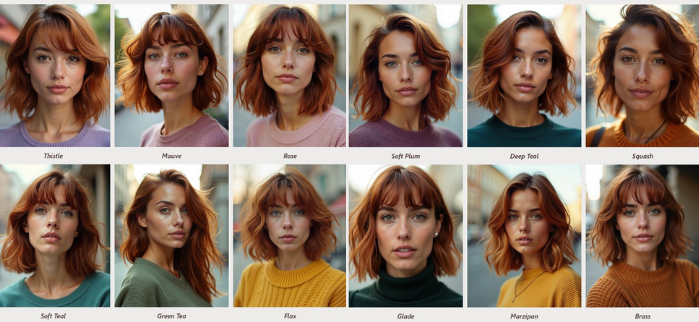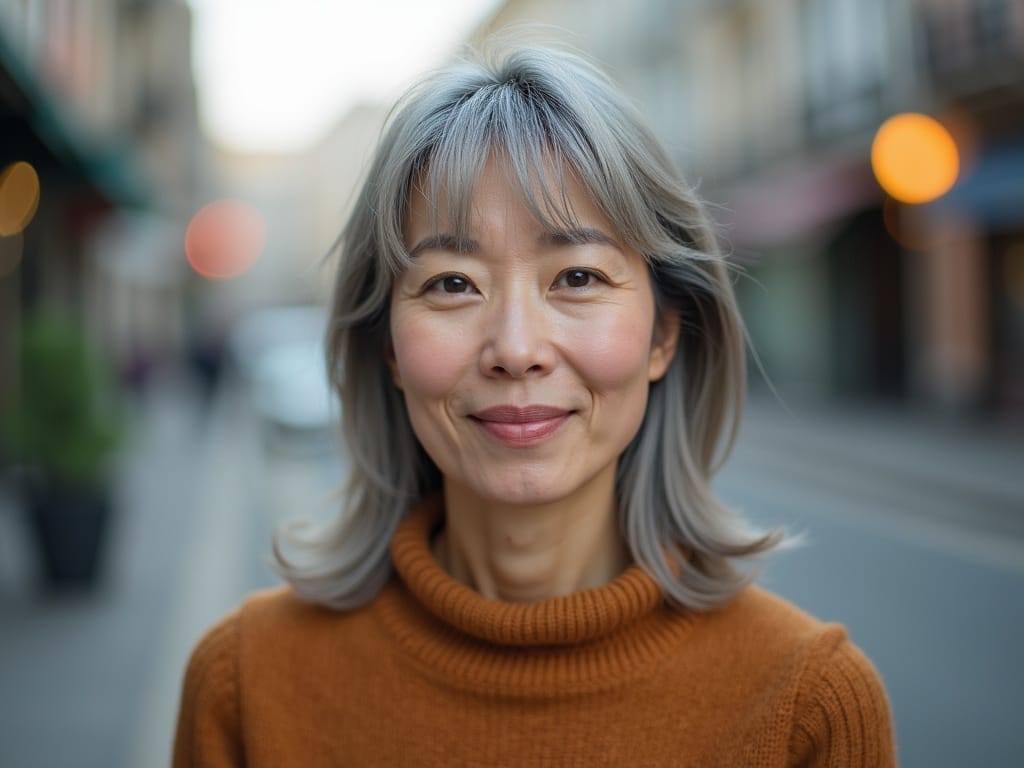Soft Autumn Color Palette: The Ultimate Guide to Your Warm & Muted Hues

Introduction
Have you ever put on a piece of clothing in a color you love—only to look in the mirror and wonder why it makes you look a little…off? Maybe your skin looks dull, your eyes seem less bright, or the color is wearing you rather than the other way around. If that sounds familiar, you might be wearing shades that clash with your natural coloring.
For those with Soft Autumn features, the wrong colors can overwhelm or wash you out. But the right ones? They blend seamlessly, enhancing your warmth and softness in a way that feels effortless. The Soft Autumn color palette is full of earthy, muted, and natural hues—think sun-faded tones, warm neutrals, and colors that feel like a hazy golden-hour glow.
But what makes a Soft Autumn unique? How does it differ from the other autumn sub-seasons? And, most importantly, how do you use this palette to build a wardrobe and beauty routine that actually works for you? Let’s get into it.
What Defines a Soft Autumn Color Palette?
Soft Autumn sits at the crossroads of Autumn’s warmth and Summer’s softness. It takes the rich, earthy tones of Autumn and gives them a hazy, sun-drenched glow—nothing too bold, nothing too stark. Your best colors are muted, blended, and warm, enhancing rather than overpowering your natural features.
Key Characteristics of Soft Autumn Colors:
- Temperature: Warm with a subtle coolness borrowed from Summer.
- Chroma: Low to medium saturation—no neon, no brights, no bold jewel tones.
- Value: Medium to slightly dark—neither too light nor overly deep.
If you have golden or neutral undertones, soft contrast in your features, and look best in earthy, blended colors, Soft Autumn is where you belong.
Soft Autumn Color Palette Breakdown
So what does your ideal color palette actually look like?
1. Best Neutrals
The perfect foundation for any Soft Autumn wardrobe: warm, dusty, and rich without being overpowering.
- Warm taupe
- Soft camel
- Muted olive
- Warm gray
- Light mocha
- Creamy beige
⚠️ Avoid: Pure black and stark white. They create too much contrast and can wash you out.
2. Best Base Colors
The colors that make up your core wardrobe—your go-to sweaters, coats, and staple pieces.
- Dusty rose brown
- Muted terracotta
- Soft cinnamon
- Warm hazelnut
- Sage green
- Smoky teal
These shades let you mix and match effortlessly while still feeling cohesive.
3. Best Accent Colors
Your pops of color—think scarves, statement tops, or that one perfect pair of shoes.
- Soft coral
- Burnt peach
- Muted mustard
- Dusty aqua
- Warm periwinkle
- Rosewood
These shades add depth without screaming for attention.
Who Looks Best in Soft Autumn Colors?
Soft Autumn features come in a range of variations, but the common denominator is a warm, muted quality that harmonizes best with earthy, blended colors. Here are some typical Soft Autumn combinations:

- Skin Tone: Warm beige, golden ivory, soft peach, warm olive, light brown with golden undertones.
- Undertone: Always warm but more neutral-warm rather than golden-warm. Slightly cool influences from Summer make Soft Autumns less rich and fiery than True Autumns.
- Hair Color: Medium golden brown, light brown with auburn undertones, dark blonde, soft copper, muted strawberry blonde.
- Eye Color: Hazel, warm green, muted brown, soft gray-green, light brown with a golden hue.
Key Signs You’re a Soft Autumn:
- Rich, golden tones overpower you, but cool colors make you look dull.
- You look best in muted, sun-faded shades rather than bold or sharp colors.
- High contrast (like black and white) makes your features appear harsh or washed out.
Who Might Struggle with Soft Autumn Colors?

Not every coloring thrives in Soft Autumn’s gentle warmth. If you have high contrast, cool undertones, or very deep or very light features, these colors might not bring out your best.
- Very Cool Undertones: If your skin leans toward icy pink, blue, or pure coolness (like many True Winters or Summers), Soft Autumn colors can make you look dull or slightly yellowed.
- Deep or Striking Features: People with dark hair, high contrast between their skin and eyes, or vivid jewel-toned eyes (like emerald green or sapphire blue) often need stronger, higher-saturation colors. Soft Autumn hues might feel too weak.
- Very Light, Delicate Features: If your coloring is ethereal and light (think Light Summer or Light Spring), Soft Autumn can feel muddy or too heavy against your skin.
- High Contrast Coloring: Soft Autumn works best for those with blended features, meaning their hair, eyes, and skin flow together in similar intensity. If you have very dark hair and very light skin (or vice versa), these colors might not provide enough definition.
If Soft Autumn shades seem to drain you or make you feel lackluster, it’s possible you belong to another season that offers either higher contrast, deeper saturation, or cooler tones.
Celebrities Who Embody Soft Autumn
If you’re looking for real-world inspiration, here are a few celebrities who likely fall into the Soft Autumn category:
- Jennifer Aniston – Her warm beige skin tone, soft golden blonde hair, and preference for muted earth tones make her a great Soft Autumn example.
- Drew Barrymore – Often seen in warm, dusky pinks, soft browns, and peachy tones that complement her soft golden complexion.
- Gisele Bündchen – Her naturally sun-kissed look and warm golden brown hair align well with Soft Autumn’s muted yet warm aesthetic.
- Julia Roberts – With her golden auburn hair and preference for warm, earthy tones, she embodies the depth and softness of this season.
- Sienna Miller – Her ability to pull off soft camel, muted peach, and earthy olive tones makes her a great example of a Soft Autumn.
These celebrities naturally lean into their best colors—soft, warm, and blended—without the harsh contrast of bolder autumn shades.
Final Thoughts: Owning Your Soft Autumn Palette
Dressing for your Soft Autumn color palette isn’t about following rules—it’s about understanding what enhances your natural warmth and softness. Stick to earthy, muted hues, avoid anything too bright or stark, and embrace the effortless beauty of your best shades.
Want to see how Soft Autumn colors actually look on your skintone? Try our Color Analysis Tool and discover your perfect palette today!
